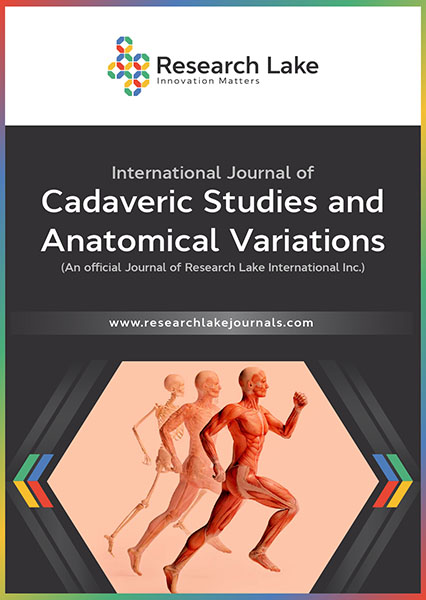Bifurcation of the Brachial Artery into Brachioradial and Brachioulnar Arteries in the Proximal Arm: Case Report and Clinical Significance
Abstract
During anatomical dissection of fifty donors in the 2020 undergraduate first-year anatomy course at the Uniformed Services University of the Health Sciences, a high origin of the radial and ulnar arteries, also known as a brachioradial artery and a brachioulnar artery, was observed on the left arm of a 90 year-old White female donor. The bifurcation of the brachial artery occurred in the proximal third of the arm. Both the left brachioradial and left brachioulnar arteries ran superficial and medial to the biceps brachii muscle. The brachioulnar artery continues as the UA in the forearm, ran superficial and lateral to the flexor carpi ulnaris muscle, traversed the flexor retinaculum, and continued to form the superficial arterial palmar arch. The brachioradial artery ran deep to the pronator teres muscle and continued as the RA in the forearm. It presented with an atypical branching pattern and was tortuous until it reached the hand. On the dorsum of the hand, the radial artery runs superficial to the first dorsal interosseous muscle, parallel to the first metacarpal bone. It also reached the palmar side of the hand in an unusual manner. Medical professionals, especially radiologists, orthopedic and vascular surgeons, need to be aware of these variations to avoid iatrogenic injuries during normal procedures, such as venipuncture and intravenous injections. Knowledge of these variations is also important during invasive procedures, such as elbow reconstructive surgery, percutaneous brachial catheterization, and when creating an arteriovenous fistula using the radial artery. When such variations are suspected, Doppler and angiogram studies are necessary.
Copyright (c) 2023 Maria Ximena Leighton, Elizabeth Maynes, Keiko Meshida, Gary Wind, Guinevere Granite

This work is licensed under a Creative Commons Attribution-NonCommercial 4.0 International License.
Copyright © by the authors; licensee Research Lake International Inc., Canada. This article is an open access article distributed under the terms and conditions of the Creative Commons Attribution Non-Commercial License (CC BY-NC) (http://creativecommons.org/licenses/by-nc/4.0/).















